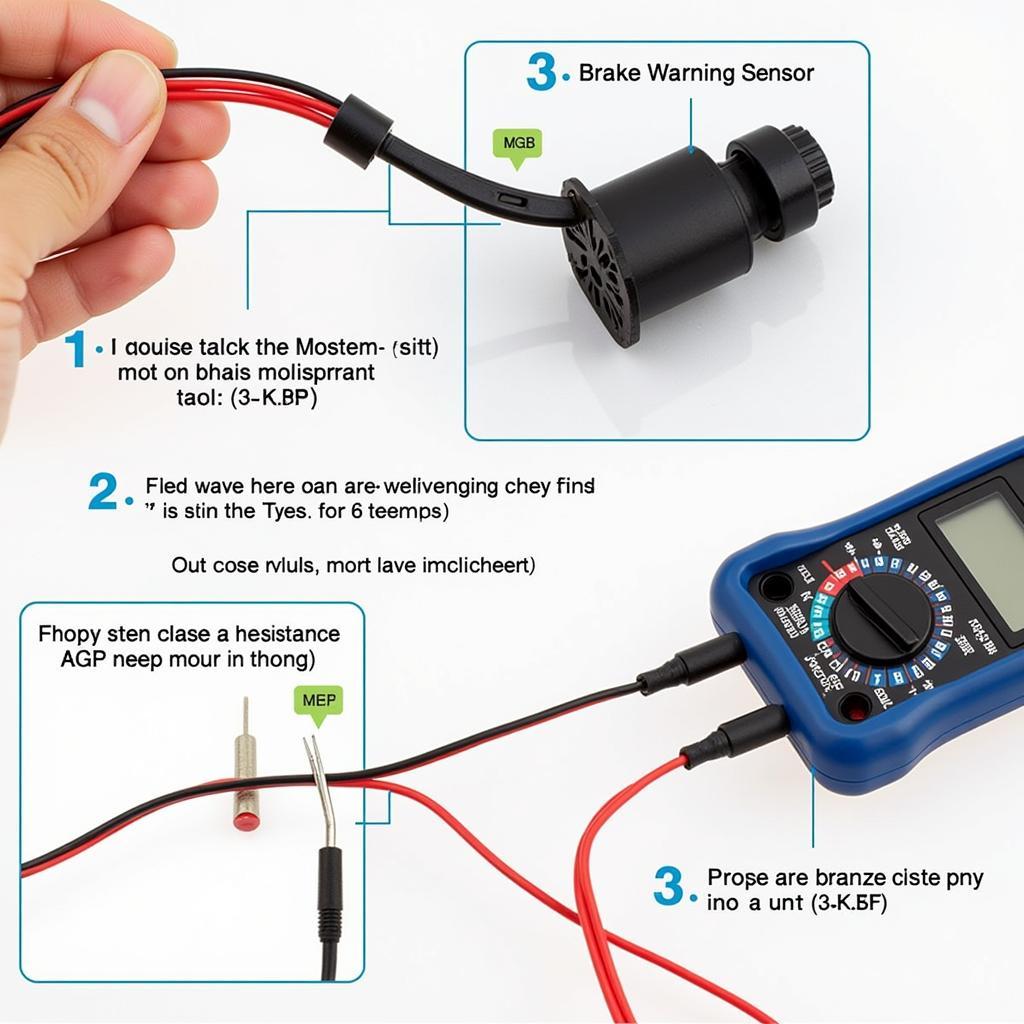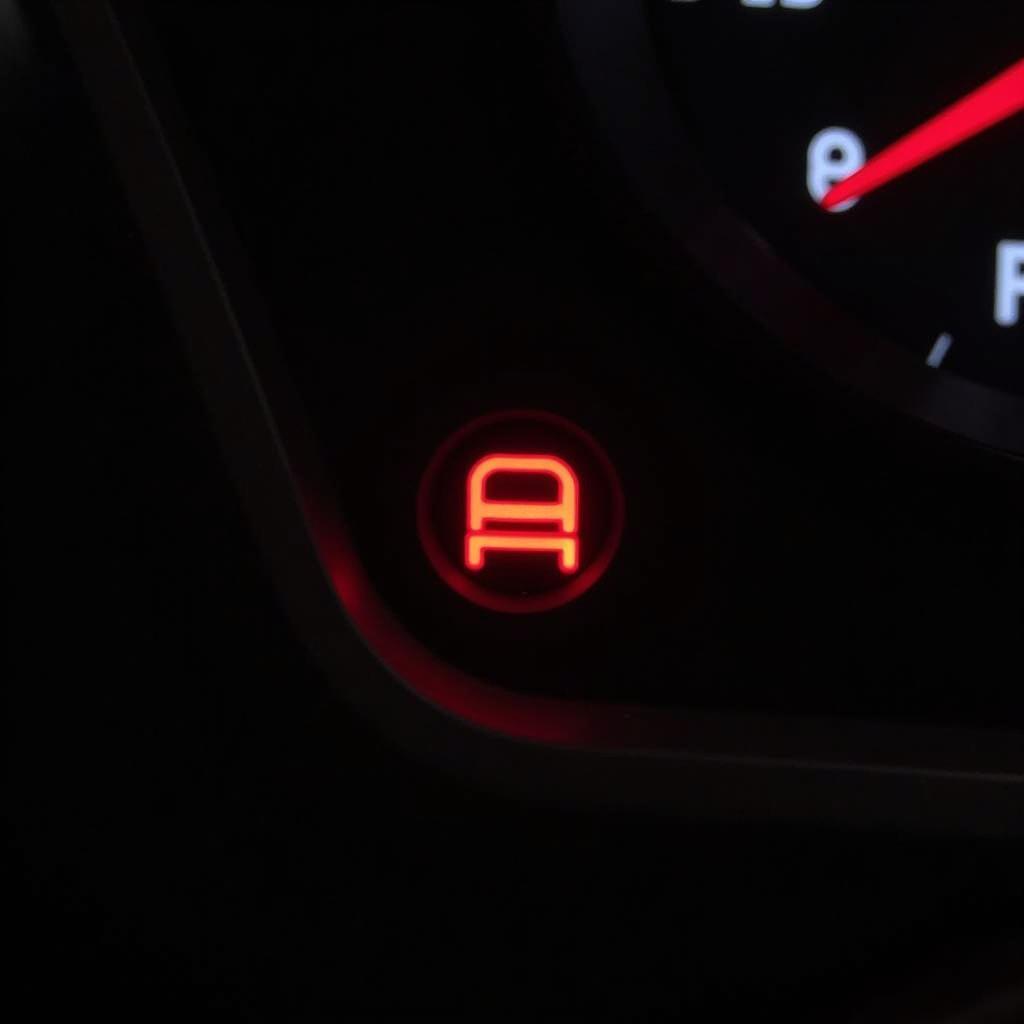A sudden illumination on your Seat’s dashboard can be unnerving. Those glowing symbols, often in vibrant colors, are your car’s way of communicating – telling you something needs attention. Ignoring them could lead to further damage, costly repairs, or even compromise your safety. This comprehensive guide delves into the world of Seat dash warning lights, equipping you with the knowledge to decipher their messages and take appropriate action.
Decoding the Dashboard: Common Seat Warning Lights
Your Seat dashboard is home to a variety of warning lights, each with a unique meaning. While some signal minor issues, others indicate serious problems requiring immediate attention.
1. Engine Warning Light
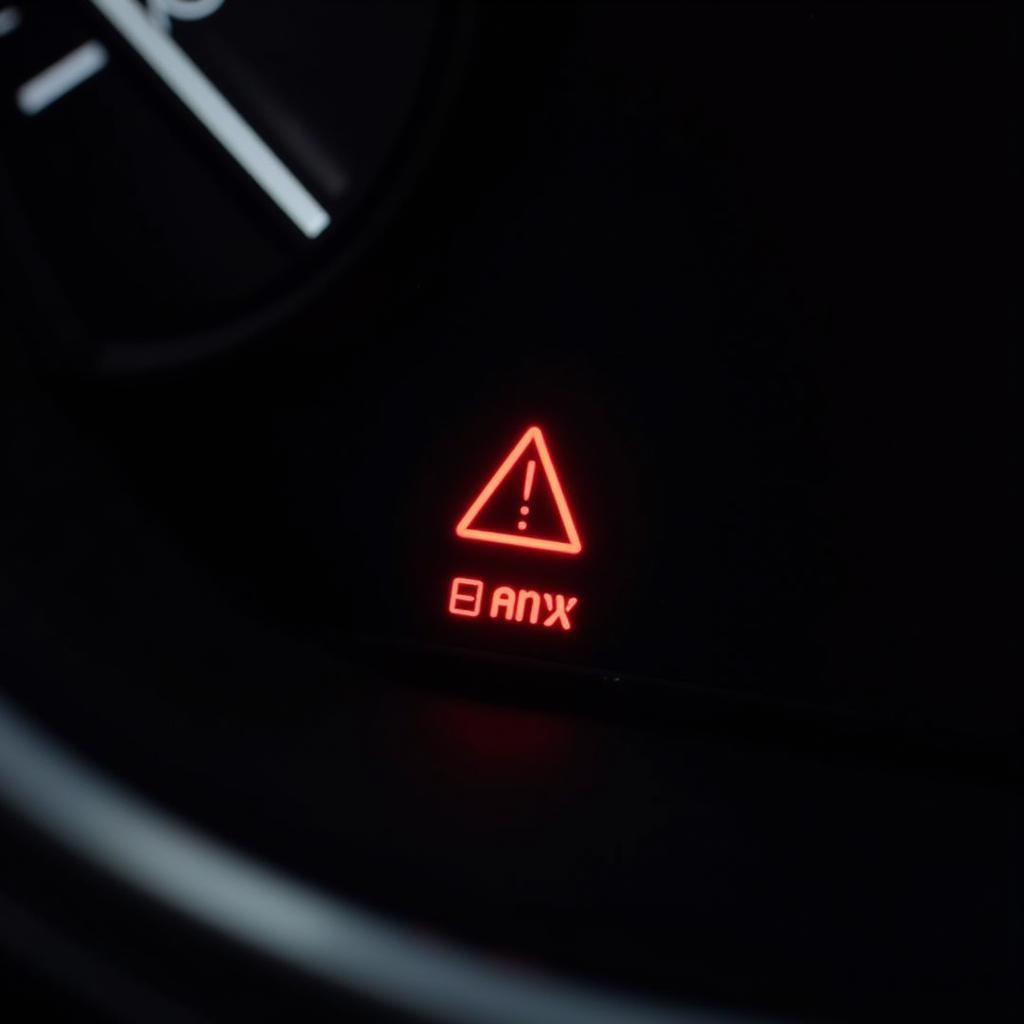 Seat Leon Engine Warning Light
Seat Leon Engine Warning Light
This light, often depicted as a yellow engine outline, is your car’s “check engine” indicator. It can illuminate for various reasons, from a loose gas cap to more severe problems like a misfire or catalytic converter malfunction.
What to do: If it’s steady, schedule a check-up with a mechanic soon. However, if it’s flashing, it indicates a severe issue; pull over when safe and contact roadside assistance.
2. Oil Pressure Warning Light
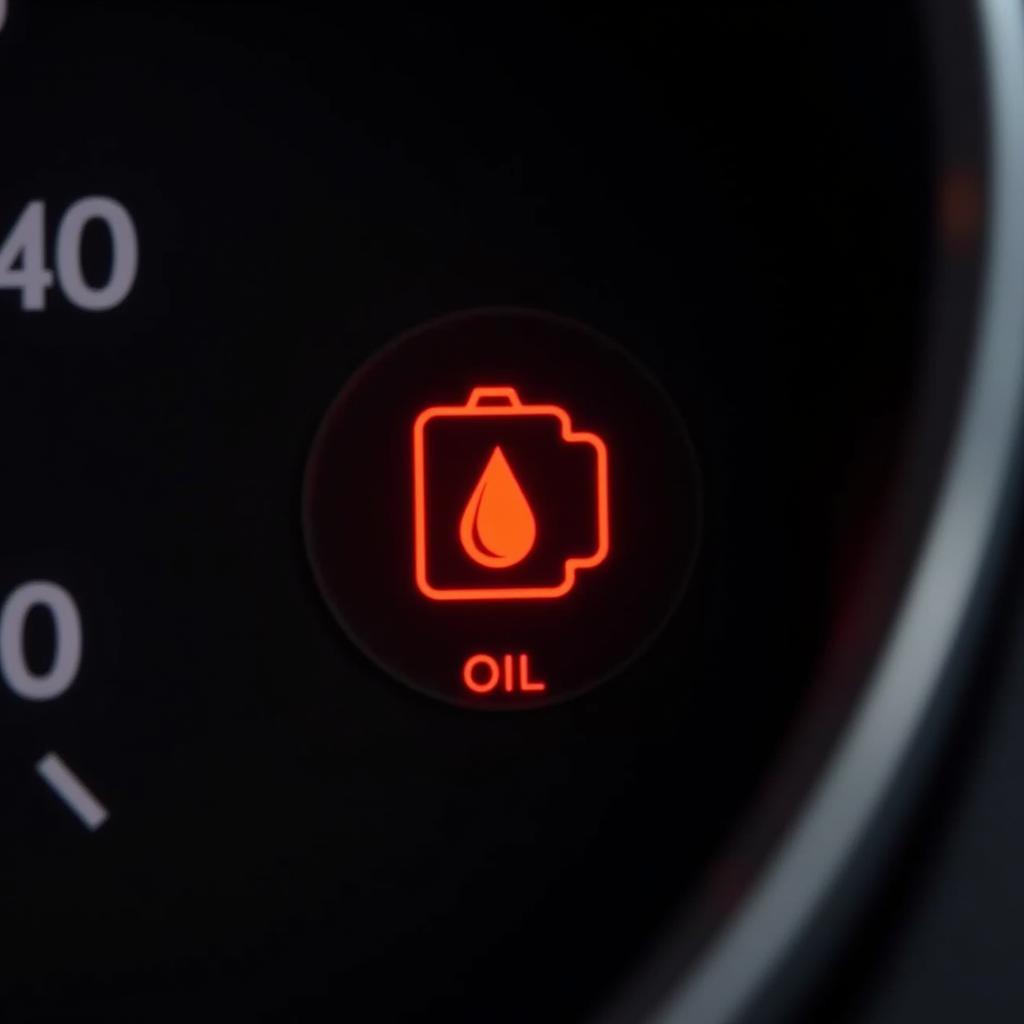 Oil Pressure Warning on Seat Dashboard
Oil Pressure Warning on Seat Dashboard
Appearing as a red oil can, this light signals low oil pressure, potentially due to a leak, insufficient oil, or a faulty oil pump.
What to do: Stop driving immediately when safe. Continuing to drive with low oil pressure can cause severe engine damage. Check your oil level and contact a mechanic.
3. Brake System Warning Light
This light, depicted as a red circle with an exclamation mark or the word “BRAKE,” can indicate several issues, including a low brake fluid level, a problem with the ABS system, or an engaged parking brake.
What to do: If it’s illuminated, immediately check your parking brake. If it’s disengaged, there might be a brake system issue. It’s crucial to have your brakes inspected by a professional as soon as possible.
4. Coolant Temperature Warning Light
This red thermometer symbol indicates that your engine coolant is overheating. This could be due to a coolant leak, a faulty thermostat, or a problem with the radiator fan.
What to do: Pull over immediately when safe and turn off your engine. Continuing to drive with an overheating engine can cause severe damage. Allow the engine to cool down completely before checking the coolant level. If low, add coolant. If not, it’s best to have a mechanic inspect the problem.
5. Battery Charge Warning Light
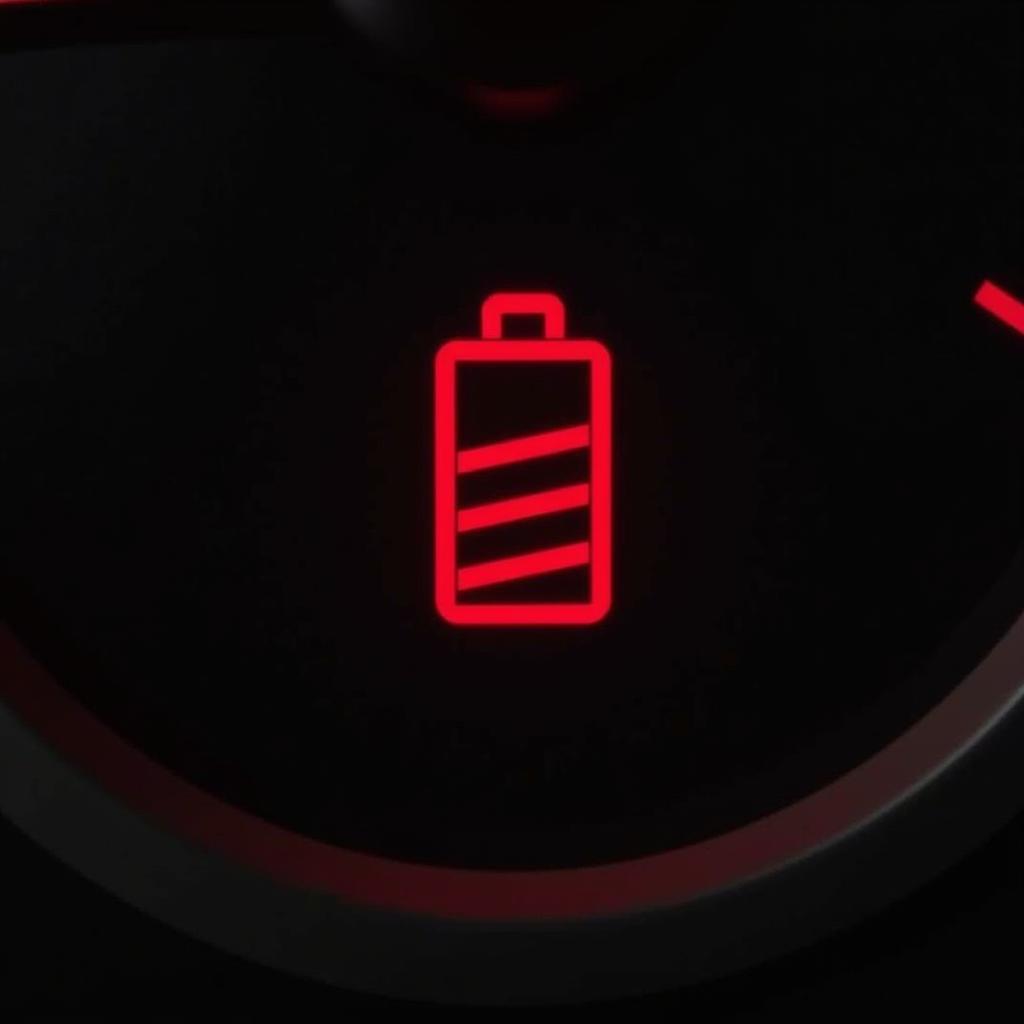 Battery Charge Warning Light Seat Alhambra
Battery Charge Warning Light Seat Alhambra
This light, resembling a red battery, indicates a problem with your Seat’s charging system. This could be due to a failing alternator, a loose battery connection, or a problem with the alternator belt.
What to do: If illuminated, it’s best to have your car inspected by a mechanic as soon as possible. Continuing to drive with a charging system issue can lead to a complete battery drain, leaving you stranded.
Advanced Technology, Advanced Warnings: Understanding Warning Lights in Modern Seats
As Seat vehicles become more technologically advanced, so do their warning systems. Here are some additional lights you might encounter in newer models:
- Tire Pressure Monitoring System (TPMS) Warning Light: This light, resembling a tire with an exclamation mark, indicates that one or more of your tires is significantly underinflated.
- Electronic Stability Control (ESC) Warning Light: This light, often depicted as a car with skid marks, indicates that the ESC system is engaged. While not always a cause for alarm, it’s a reminder to drive cautiously, especially on slippery roads.
- Adaptive Cruise Control (ACC) Warning Light: This light might illuminate if there’s an issue with your ACC system or if the system is temporarily unavailable.
- Lane Departure Warning (LDW) Light: This light, typically yellow, will flash if your Seat drifts out of its lane without signaling. It’s a valuable safety feature that can help prevent accidents.
Remote Diagnostics and Programming: The Future of Seat Repair
Gone are the days when diagnosing a warning light required a trip to the mechanic. Today, remote diagnostics and programming services offer a convenient and efficient solution.
Here’s how it works:
- Connect: Using specialized software, a remote technician can access your Seat’s onboard computer system.
- Diagnose: The technician can read fault codes, analyze live data streams, and pinpoint the root cause of the warning light.
- Program: In some cases, the technician can remotely reprogram modules, update software, or clear fault codes, potentially resolving the issue without any physical intervention.
Benefits of remote diagnostics and programming:
- Convenience: Get your Seat diagnosed and repaired from the comfort of your home or office.
- Speed: Remote diagnostics are often faster than traditional methods, getting you back on the road quicker.
- Cost-effectiveness: In many cases, remote services can save you money on towing and diagnostic fees.
Don’t Ignore the Signs: Taking Action When Your Seat Speaks
Warning lights on your Seat dashboard are not to be ignored. They are your car’s way of communicating potential problems. By understanding the meaning of these lights and taking appropriate action, you can prevent further damage, save money on costly repairs, and most importantly, ensure your safety and the safety of your passengers.
While this guide offers a comprehensive overview of Seat dash warning lights, always refer to your owner’s manual for model-specific information. If you encounter a warning light you don’t recognize or are unsure about the severity of the issue, it’s always best to err on the side of caution and consult a qualified mechanic. Remember, a little knowledge and prompt action can go a long way in ensuring a smooth and safe driving experience in your Seat.

